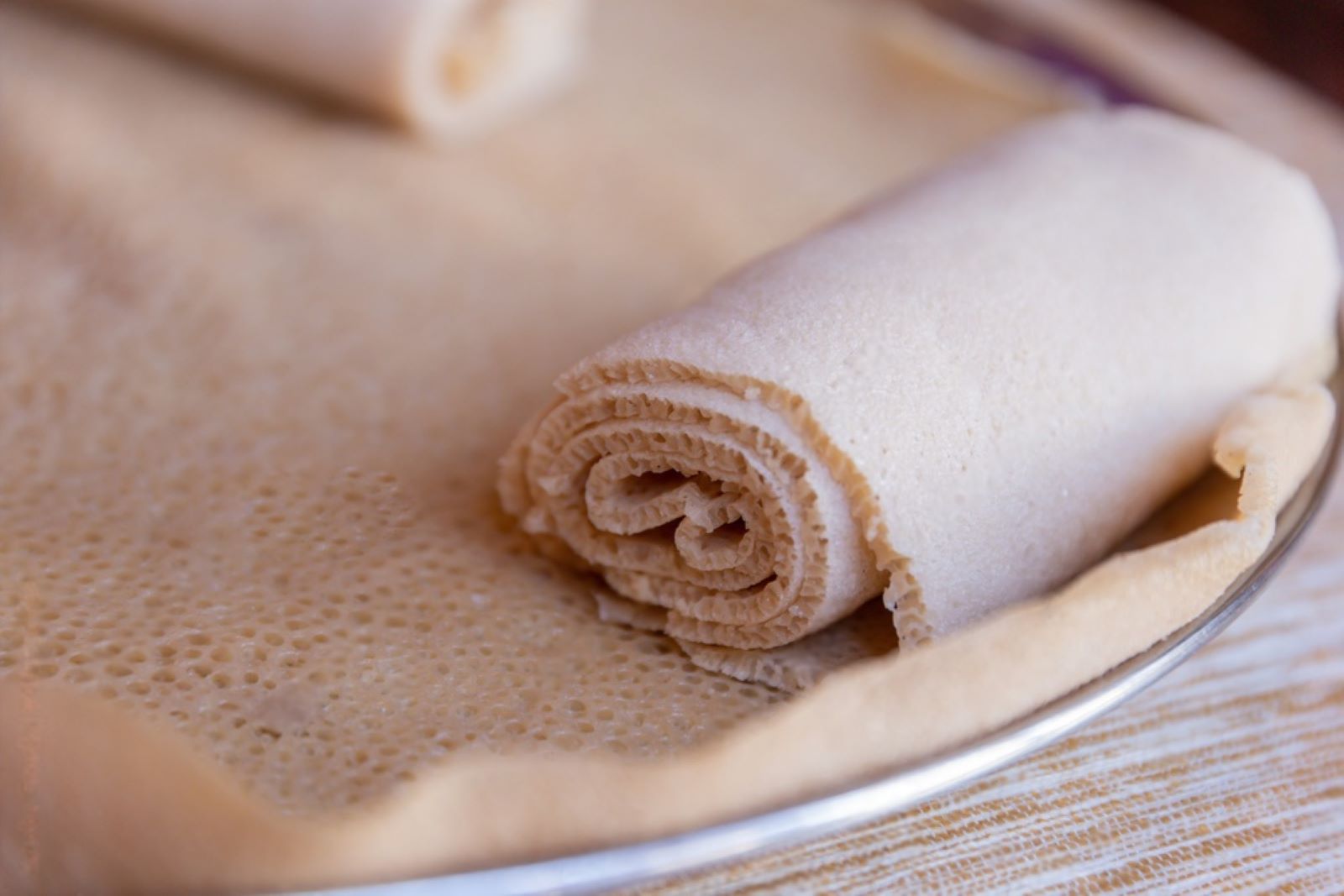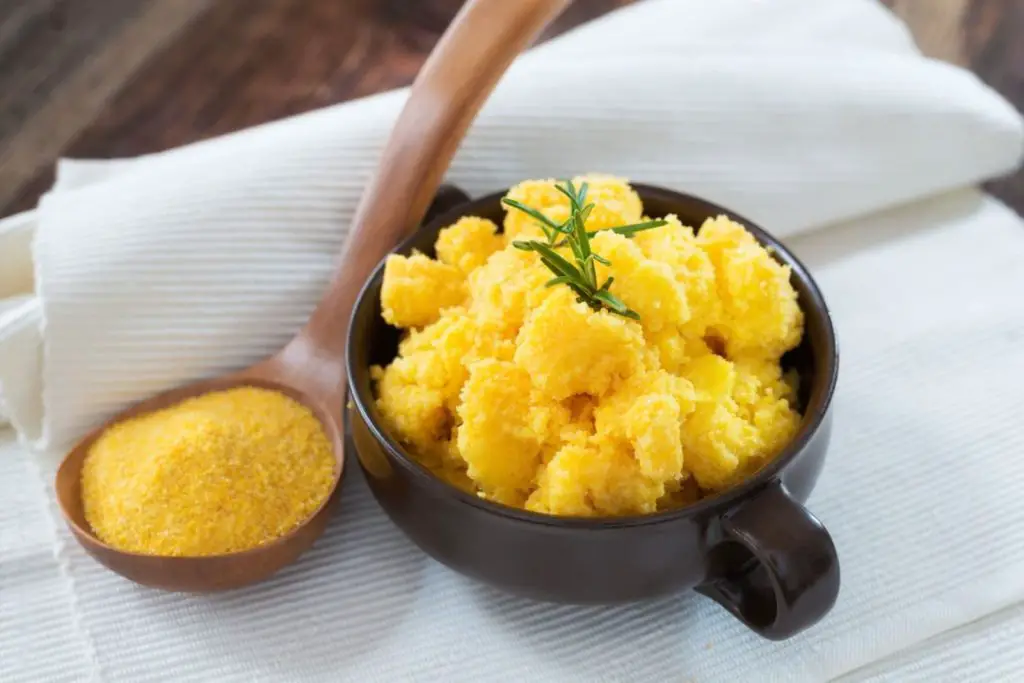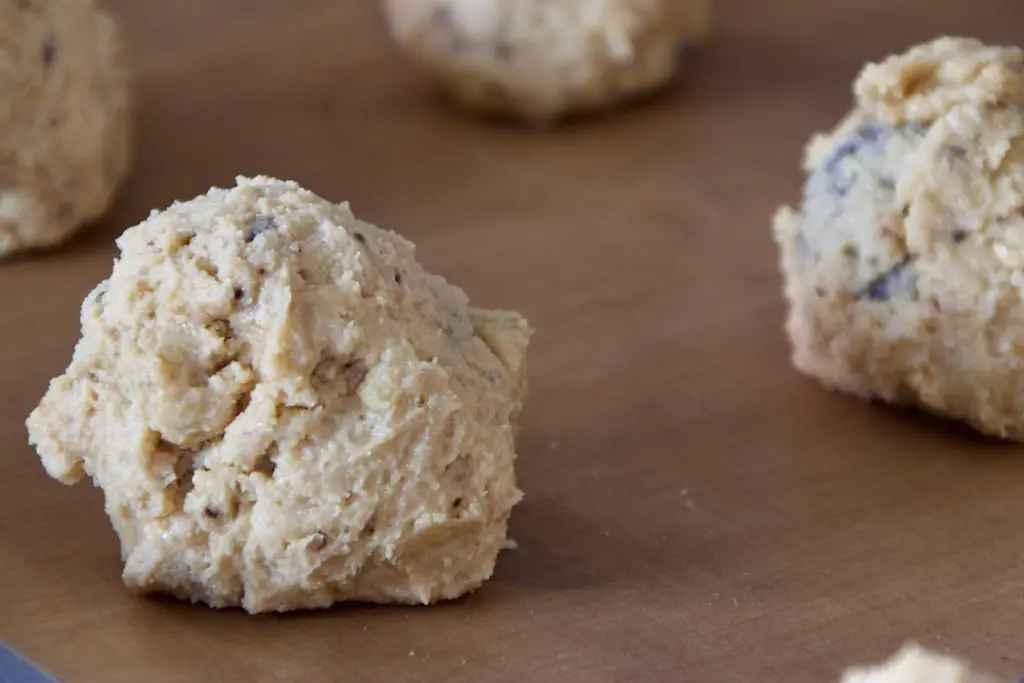
Injera is a traditional Ethiopian flatbread that is enjoyed by many around the world. Made from fermented teff flour, injera has a unique sour taste and spongy texture. It is often used as a base for various stews and dishes, or simply eaten on its own. If you have a surplus of injera or want to preserve it for future use, freezing is a great option. Freezing injera will help maintain its freshness and extend its shelf life. In this article, we will guide you through the steps to freeze injera properly, ensuring that it retains its taste and texture when you’re ready to enjoy it.
Here’s a step-by-step guide on how to freeze injera:
Step 1: Choose fresh injera
When it comes to freezing injera, selecting fresh and high-quality injera is essential. Fresh injera not only tastes better but also freezes more effectively and maintains its quality during storage. Here’s why it’s important to choose fresh injera:
- Taste and texture: Fresh injera has a soft and spongy texture with a slightly sour taste, which is characteristic of this Ethiopian flatbread. Choosing fresh injera ensures that you freeze and preserve these qualities, allowing you to enjoy the same delicious taste and texture when you thaw and reheat it later.
- Preservation of nutrients: Fresh injera retains a higher nutritional value compared to older or spoiled injera. It contains essential nutrients like carbohydrates, dietary fiber, and minerals from the teff flour used in its preparation. By selecting fresh injera, you can preserve these nutrients, ensuring that you still benefit from them even after freezing.
- Freezing effectiveness: Fresh injera has a higher moisture content, which plays a crucial role in maintaining its quality during freezing. The moisture helps prevent the injera from drying out and becoming brittle when frozen. It also aids in preserving the soft and pliable texture of the injera, making it more enjoyable to eat after thawing.
- Reduced risk of spoilage: Injera that has been left out for too long or shows signs of spoilage, such as mold or an unpleasant odor, should be avoided. Freezing such injera may not effectively halt the spoilage process, and it may affect the taste and overall quality of the injera even after thawing. Choosing fresh injera minimizes the risk of starting the freezing process with compromised or spoiled bread.
Step 2: Prepare the injera
Properly preparing the injera before freezing is crucial for convenience and minimizing waste. If you have a large sheet of injera, it’s recommended to cut it into smaller pieces or portions that will be convenient for your future use. Here’s why this step is important:
- Portion control: Cutting the injera into smaller pieces allows you to portion it according to your needs. Instead of thawing the entire sheet of injera, you can easily remove and thaw only the amount you require for a particular meal. This helps prevent unnecessary waste and ensures that you can enjoy the injera without having to thaw more than necessary.
- Ease of thawing: Smaller portions of injera thaw more quickly and evenly than larger sheets. When you cut the injera into convenient sizes, it reduces the thawing time required. This is especially beneficial if you need to thaw injera quickly for impromptu meals or when you’re short on time.
- Flexibility in serving sizes: By cutting the injera into smaller pieces, you have the flexibility to serve different portion sizes according to your needs. Whether you want a larger piece for a main course or smaller pieces for appetizers or snacks, having the injera pre-cut makes it easier to cater to various serving requirements.
- Improved storage efficiency: When you portion the injera into smaller pieces, it allows for better storage efficiency. Smaller portions can be neatly arranged in the freezer, maximizing the available space. This ensures that you can freeze a larger quantity of injera while still maintaining an organized freezer environment.
Can I freeze injera immediately after it’s made, or should I let it cool down first?
It is generally recommended to let injera cool down before freezing it. Allowing the injera to cool down to room temperature helps prevent condensation, which can lead to moisture retention and potential freezer burn. Additionally, freezing hot injera directly can result in a loss of texture and quality. Therefore, it’s best to let the injera cool completely before packaging and placing it in the freezer.
Step 3: Wrap the injera
Properly wrapping the injera before freezing is essential to prevent freezer burn and maintain its moisture. Each piece of injera should be individually wrapped tightly with either plastic wrap or aluminum foil. Here’s why this step is important:
- Protection against freezer burn: Freezer burn occurs when the moisture in the injera evaporates, leaving it dehydrated and causing changes in texture and taste. Wrapping each piece of injera tightly creates a barrier that helps protect it from exposure to cold air and moisture loss. This significantly reduces the risk of freezer burn, ensuring that the injera remains in optimal condition throughout its storage in the freezer.
- Preservation of moisture: Injera’s spongy texture relies on its moisture content. By tightly wrapping each piece, you help seal in the moisture, preventing it from escaping during freezing. This helps maintain the softness and flexibility of the injera, ensuring that it retains its characteristic texture when thawed and reheated.
- Preventing contamination and odor absorption: Wrapping the injera individually with plastic wrap or aluminum foil also helps prevent it from absorbing odors or flavors from other foods in the freezer. It acts as a protective layer, ensuring that the injera’s distinct taste and aroma are preserved. Additionally, it prevents any potential contamination from other frozen foods, maintaining the injera’s integrity and quality.
- Convenience in portioning: Individually wrapping each piece of injera allows for easy portioning. You can easily remove and thaw only the desired amount without having to defrost the entire batch. This ensures that you can enjoy injera as needed, reducing waste and ensuring freshness for the remaining portions.
Step 4: Place in a freezer bag
Once you have wrapped each piece of injera, it’s important to transfer them into a freezer bag. Placing the individually wrapped injera in a freezer bag and removing any excess air before sealing it provides an additional layer of protection and helps maintain the quality of the injera during freezing. Here’s why this step is important:
- Enhanced protection against freezer burn: Freezer bags are designed to provide airtight and moisture-resistant storage. By placing the wrapped injera in a freezer bag, you create an extra barrier that helps prevent the injera from coming into direct contact with the cold air in the freezer. This reduces the risk of freezer burn even further, ensuring that the injera retains its texture and taste.
- Moisture retention: Freezer bags help to retain the moisture content of the injera. By sealing the bag tightly, you minimize the potential for moisture loss during freezing. This is particularly crucial for maintaining the soft and spongy texture of the injera. The airtight seal created by the freezer bag helps to lock in the moisture and prevent the injera from drying out.
- Organization and storage efficiency: Placing the wrapped injera in a freezer bag helps keep them organized and prevents them from scattering or getting lost in the freezer. The bag also allows for easy stacking, optimizing the use of freezer space. This ensures that the injera remains intact and readily accessible when you need to retrieve a portion.
- Protection against contaminants: The freezer bag acts as an additional protective layer, guarding the injera against potential contaminants in the freezer. It prevents the absorption of any odors or flavors from other foods, ensuring that the injera maintains its distinct taste and aroma.
Is it safe to freeze injera in a glass container?
Freezing injera in a glass container is generally safe, but there are a few precautions to consider. Glass containers should be freezer-safe and designed to withstand extreme temperature changes to prevent cracking or shattering. Additionally, leave enough headspace in the container to allow for expansion during freezing. It’s also important to cool the injera to room temperature before placing it in the glass container to avoid thermal shock.
Step 5: Label and date the bag
Labeling and dating the freezer bag containing the wrapped injera is an important step to maintain organization, track freshness, and ensure proper rotation of the injera. By clearly marking the date of freezing and providing additional information such as quantity or portion size, you facilitate easy reference and usage. Here’s why this step is important:
- Freshness tracking: By writing the date of freezing on the bag, you establish a reference point for the freshness of the injera. Over time, frozen foods can lose quality, and knowing the date of freezing helps you keep track of how long the injera has been in the freezer. This information enables you to prioritize and use the oldest injera first to ensure you consume it within a reasonable timeframe.
- Inventory management: Labeling the quantity or portion size on the bag allows for efficient inventory management. You can easily determine the available amount of injera in the freezer without having to open each bag or rely on memory. This helps you plan your meals accordingly and avoid unnecessary thawing of additional portions when you only need a specific quantity.
- Rotation and usage: Properly labeling the bags with the date and portion size enables you to practice the “first in, first out” principle. When you want to use the injera, you can easily identify the oldest ones and ensure they are consumed before newer batches. This ensures that the injera is used within a reasonable time frame and prevents it from being forgotten or wasted.
- Convenience and meal planning: Clear labeling provides convenience and simplifies meal planning. You can easily identify the quantity of injera available, plan meals accordingly, and determine if you need to thaw additional portions in advance. It streamlines the process and saves time when deciding which packages to thaw for a particular meal.
Step 6: Freeze the injera
After properly labeling and dating the freezer bag containing the wrapped injera, it’s time to place it in the freezer. When freezing the injera, there are a few considerations to keep in mind to maintain its integrity and quality. Here’s why this step is important:
- Maintaining shape and texture: When placing the labeled freezer bag with the wrapped injera in the freezer, ensure that the injera is stored in a flat position. This prevents it from getting bent, folded, or crushed during freezing. Storing the injera flat helps maintain its original shape and texture, ensuring that it retains its characteristic softness and sponginess.
- Preventing flavor transfer: It’s important to keep the injera away from strong-smelling foods in the freezer. Injera has a unique taste and aroma, and exposure to strong odors from other foods can lead to flavor transfer. To preserve the authentic flavor of the injera, store it in an area of the freezer where it won’t come into contact with strongly scented items. This helps ensure that the injera maintains its distinct taste when thawed and reheated.
- Efficient use of freezer space: Properly placing the labeled freezer bag in the freezer allows for efficient use of space. Try to arrange the injera in a way that maximizes the available freezer area and allows for easy organization. This ensures that the injera remains easily accessible and that you can locate and retrieve specific portions without hassle.
- Protection from freezer burn: Freezing the injera promptly after wrapping and labeling helps protect it from freezer burn. Freezer burn can occur when the injera is exposed to air and moisture for an extended period. By placing the wrapped injera in a labeled freezer bag and sealing it properly, you create a protective barrier that minimizes the risk of freezer burn, ensuring that the injera maintains its quality and taste over time.
How long can injera be stored in the freezer?
Injera can be stored in the freezer for up to 3 months without a significant decline in quality. It is important to properly package the injera to prevent freezer burn and maintain its freshness. Ensure that the injera is tightly wrapped in airtight packaging such as plastic wrap or freezer bags to minimize exposure to air and moisture. Beyond 3 months, the texture and taste of the injera may start to deteriorate, so it is advisable to consume it within the recommended timeframe for the best results.
Step 7: Thaw and enjoy
When the time comes to enjoy the frozen injera, it’s essential to thaw it properly to ensure the best taste and texture. Here’s how to thaw and reheat the injera for optimal enjoyment:
- Thawing at room temperature: To thaw the injera, remove the desired amount from the freezer and let it thaw at room temperature. Place the frozen injera on a plate or a clean surface, ensuring it’s not exposed to direct sunlight or heat sources. Thawing at room temperature allows the injera to gradually soften and reach its original texture. This method may take some time, typically 1 to 2 hours, depending on the thickness and size of the injera.
- Microwave defrosting: If you prefer a faster thawing method, you can use the defrost setting on your microwave. Place the frozen injera on a microwave-safe plate and follow the manufacturer’s instructions for defrosting. The microwave defrost setting is designed to thaw the injera gently, minimizing the risk of overheating or drying out. However, be cautious not to overdo it, as microwave power levels can vary. It’s recommended to check the injera periodically and adjust the time as needed.
- Reheating for softness and warmth: Once the injera has thawed, it may feel slightly cool and less pliable. To restore its softness and warmth, you can briefly reheat it. One common method is to warm the injera on a hot pan or griddle for a few seconds on each side. This helps bring back its original soft texture and enhances its flavors. Alternatively, you can place the injera on a microwave-safe plate, cover it with a damp paper towel, and microwave it for a few seconds until it becomes warm.
Remember to handle the thawed injera with care, as it may be delicate and prone to tearing. You can then use the thawed and reheated injera to accompany various Ethiopian dishes, such as stews, sauces, or vegetables.
Other related questions
Can I refreeze previously thawed injera?
It is generally not recommended to refreeze previously thawed injera. When injera is thawed, moisture is released, and refreezing it can lead to a loss of quality, texture, and taste. Additionally, the process of thawing and refreezing can increase the risk of bacterial growth and foodborne illnesses. It’s best to consume the thawed injera or any leftovers promptly to ensure freshness and avoid the need for refreezing.
How do I know if my frozen injera has gone bad?
When determining if frozen injera has gone bad, consider the following indicators. First, check for any signs of freezer burn, such as dry or discolored patches on the surface of the injera. If the injera appears excessively dry, brittle, or has an off smell, it may have lost its quality. Additionally, if there are any signs of mold growth or an unpleasant odor, it is best to discard the injera to avoid any potential health risks. Trust your senses and use your judgment to determine if the frozen injera is still safe to consume.
Can I use frozen injera with the fresh ones?
Yes, you can use frozen injera alongside fresh ones. When serving a meal, you can thaw the frozen injera and heat it briefly to make it warm and pliable. You can then serve a combination of fresh and thawed injera together. However, keep in mind that the texture and taste of the thawed injera might differ slightly from freshly made injera. It’s always a good idea to label and keep track of which injera is fresh and which is frozen to ensure proper rotation and usage.
Will freezing injera affect its taste and texture?
Freezing injera can potentially affect its taste and texture to some extent. The moisture in the injera can undergo changes during freezing and thawing, which might lead to a slightly different texture compared to freshly made injera. Additionally, freezing can cause a subtle change in taste, with some individuals noticing a slight difference in flavor. However, proper packaging and careful thawing techniques can help minimize these effects and still result in enjoyable injera.
Can I freeze leftover injera dishes that already have toppings or sauces?
Freezing leftover injera dishes with toppings or sauces is possible, but it may impact the quality and texture of the toppings. Some toppings or sauces, especially those with high water content, can become watery or lose their original texture when frozen and thawed. It’s generally recommended to freeze the injera separately from the toppings or sauces and assemble them when reheating for better results.
Are there any precautions or considerations when freezing injera with specific dietary restrictions, like gluten-free or vegan versions?
When freezing gluten-free injera, it’s important to ensure that the injera is stored separately from any gluten-containing products to prevent cross-contamination. Use dedicated gluten-free packaging materials and label them clearly. For freezing vegan injera, make sure to use vegan-friendly packaging materials and avoid any animal-derived ingredients in the wrapping or storage process.








